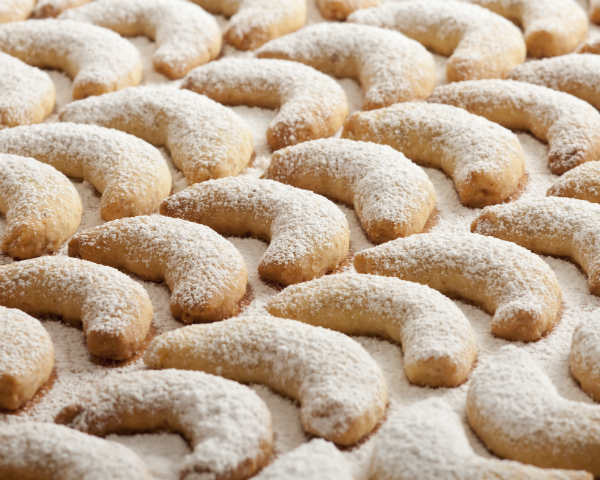What Cookies Look And Taste Like Around The World
Chewy or crunchy, chocolaty or nutty, flat or twisted... A cookie is a cookie, but depending on where in the world it originates, a cookie may be called by another name and may look and taste very different from the kind of cookie you're used to.
What Cookies Look and Taste Like Around the World (Slideshow)
A cookie in the most basic terms is a sweet, baked, flour-based finger food. But it can come in all shapes, sizes, flavors, and textures. One country's iconic cookie may be light and fluffy, while another's may be triangular and jam-filled or even waffle-like and filled with syrup. Still, a cookie by any other name, or from any other country, would smell just as sweet.
The first cookies, though, were not intended to be cookies. Dating back to the 7th century Persia — one of the first countries to grow and use sugar — it's believed that cookies were originally used as test cakes to test the temperature in an oven. With the growing spice trade, cooking techniques and ingredients, made their way into Northern Europe and the rest of the world, resulting in the various kinds of cookies we know today.
Unless you've had the treat of sampling cookies all over the world, you may be missing out on other countries' iconic cookies. Depending on where you are, some of these cookies can be bought in grocery stores, ordered at specialty bake shops and famous cafés, or picked up at seasonal and year-round markets.
Australia's national cookie the Anzac biscuit, a "bikkie" made with rolled oats and often coconut and golden syrup, is baked daily at one of Sydney's most celebrated bakeries, Flour and Stone, where it's made with two different types of coconut. Lebkuchen, a softer type of gingerbread cookie that has a sweet, slightly nutty taste, can be found every Christmas at Nuremberg's Christmas Market in Germany. Most of us know the macaron, a light and crisp cookie, filled with ganache, that melts in your mouth and comes in all kinds of colors and flavors. And any macaron-lover must visit Paris' famous Ladurée, notable for its macarons.
The panellet — a Spanish cookie that is traditionally prepared for Dia de Todos los Santos, or All Saints Day, in Spain — is made with ground almonds; formed into balls; rolled in cocoa powder, candied cherries, coconut flakes, or pine nuts; and often flavored with coffee or cinnamon. A good place to try one is at Barcelona's Foix de Sarrià, a bakery, which serves all kinds of panellets. In the Netherlands, a stroopwafel is a national sweet treat made by combining two round waffle halves, filled with syrup or caramel, and dipping one side in chocolate. It's available at Amsterdam's Albert Cuyp street market, where vendors will coat the cookie with generous amounts of syrup. Also known as a vanilla crescent, a vanillekipferl is a small, crescent-shaped cookie that is made with ground almonds, walnuts, or hazelnuts, flavored with vanilla and dusted with sugar. Stop in at Café Central or The Demel in Austria for a taste.
And of course, the chocolate chip cookie — chocolaty, chewy, and gooey — is an American cookie icon. When visiting these countries, don't miss out on their iconic cookies. Read on to see what cookies look and taste like around the world.
Haley WIllard is The Daily Meal's assistant editor. Follow her on Twitter @haleywillrd.
